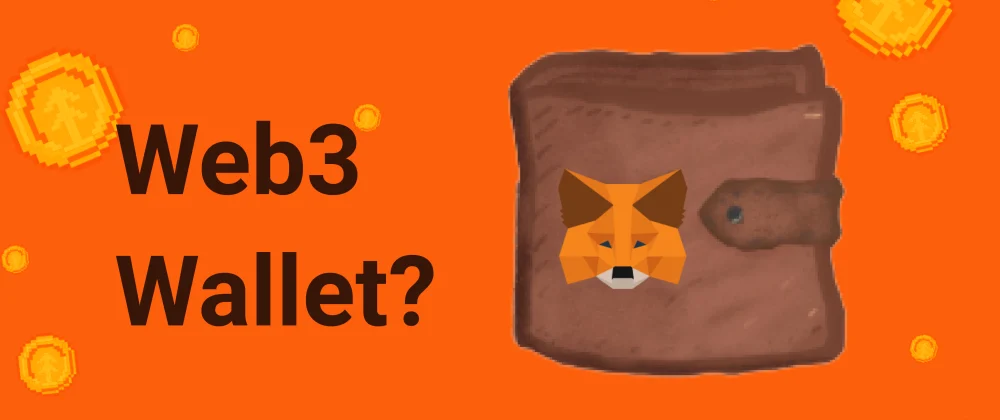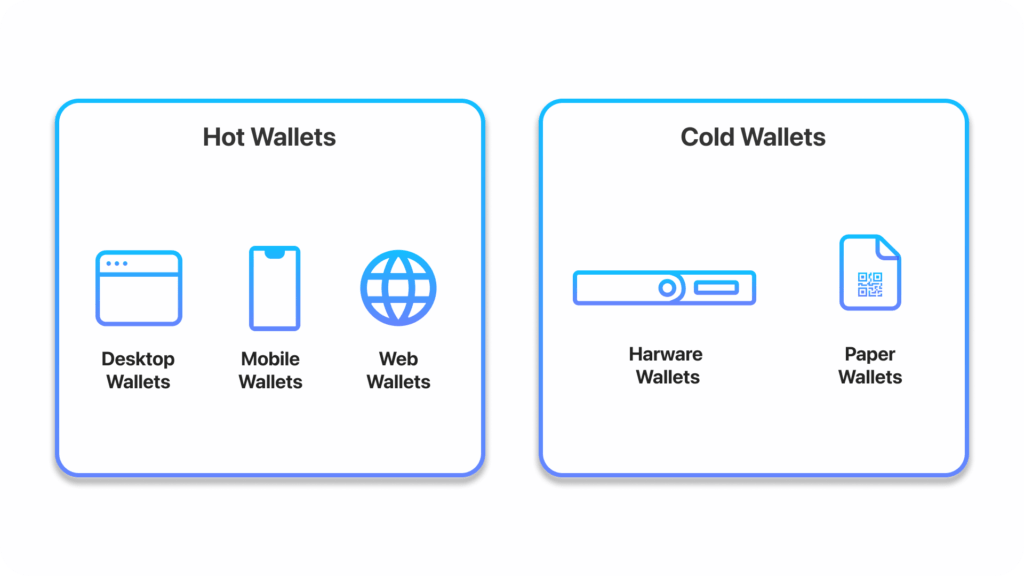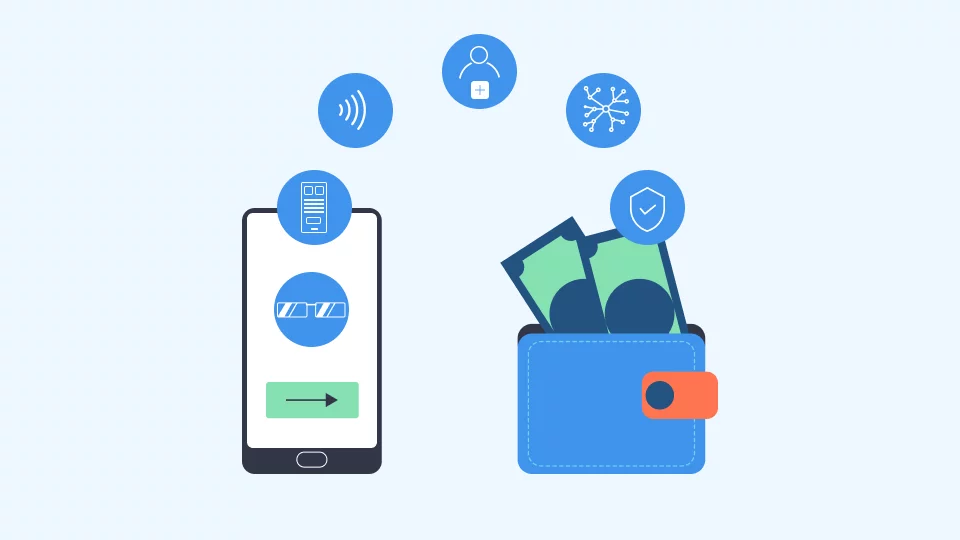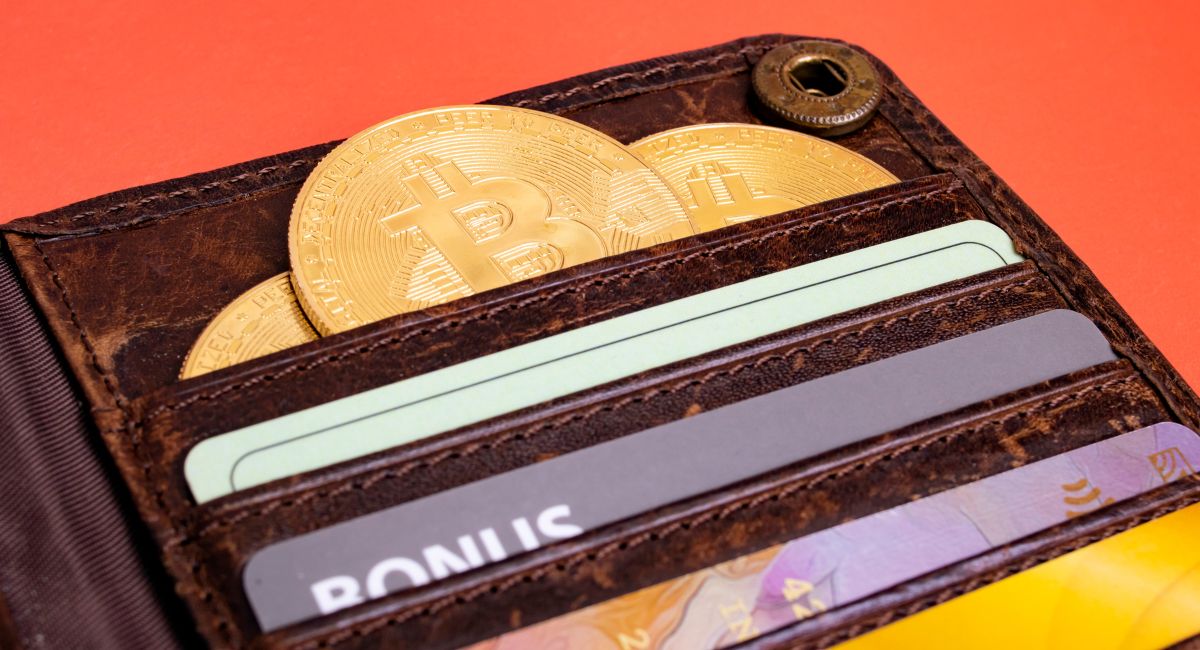Answering All The Questions Related To Web3 Wallets And Managing Digital Assets Through Them
As the digital landscape continues to evolve, Web3 wallets have emerged as an essential tool in the realm of decentralized technologies and cryptocurrencies. Web3 wallets provide users with greater control, security, and flexibility in managing their digital assets, including cryptocurrencies, NFTs, and decentralized applications (DApps). In this comprehensive guide, we’ll explore Web3 wallets in-depth, covering everything from what they are to how to choose the right one and the best practices for their use.
Understanding Web3 Wallets
In the realm of decentralized technologies, Web3 wallets are gaining prominence as the cornerstone of managing digital assets such as cryptocurrencies, Non-Fungible Tokens (NFTs), and decentralized applications (DApps). These wallets are integral to the Web3 ecosystem, which emphasizes decentralization, user ownership, and enhanced security. In this section, we’ll delve into the concept of Web3 wallets, explore how they differ from traditional wallets, and highlight their key features and benefits.
What Are Web3 Wallets?
Web3 wallets, also known as blockchain wallets, are digital tools that allow users to store, manage, and interact with decentralized digital assets on blockchain networks. These assets can include cryptocurrencies like Bitcoin and Ethereum, unique digital collectibles (NFTs), and tokens associated with various DApps. Web3 wallets are specifically designed to interface with blockchain networks and provide users with control over their digital assets without relying on centralized intermediaries like banks or payment processors.
How Do They Differ from Traditional Wallets?
Web3 wallets differ significantly from traditional wallets, which are typically associated with fiat currencies and physical cards. Here are the key distinctions:
- Blockchain Integration: Web3 wallets are purpose-built for blockchain technology. They enable users to interact with blockchain networks, store cryptocurrencies, and engage with decentralized applications. In contrast, traditional wallets primarily deal with fiat currency transactions and lack blockchain integration.
- User Ownership: Web3 wallets adhere to the principles of decentralization and user ownership. Users have sole control over their private keys, allowing them to access and manage their digital assets. In traditional wallets, financial institutions often control access to funds.
- Security: Web3 wallets prioritize security through cryptographic methods. They use public and private keys to authenticate and secure transactions, making them resilient to hacks. Traditional wallets, while secure in their own right, may rely on passwords and personal information, which can be vulnerable to breaches.
- Cross-Platform Compatibility: Web3 wallets are designed to work seamlessly across various devices and platforms, including web browsers, mobile apps, and even hardware devices. Traditional wallets are typically tied to physical cards or bank accounts and may not offer such universal compatibility.
- Interoperability: Web3 wallets can interact with different blockchain networks, allowing users to manage multiple cryptocurrencies and assets in one place. Traditional wallets are generally limited to a single currency or financial institution.
Also, read – List Of 10 Best Web3 Wallets
Key Features and Benefits
Web3 wallets offer a range of features and benefits that make them integral to the world of decentralized digital assets:
- User Control: Users have full control over their private keys and digital assets, reducing reliance on third parties and enhancing ownership.
- Security: Cryptographic encryption and decentralized architecture provide robust security against unauthorized access and hacks.
- Ease of Use: Web3 wallets are designed to be user-friendly, making it easy for both beginners and experienced users to manage digital assets.
- Cross-Platform Accessibility: Web3 wallets can be accessed on various devices, ensuring that users can manage their assets wherever they go.
- Interoperability: These wallets support multiple blockchain networks, enabling users to diversify their digital asset portfolios.
- Decentralized Application Interaction: Users can seamlessly connect with DApps, participate in DeFi protocols, and manage NFT collections.
- Privacy and Anonymity: Some Web3 wallets prioritize privacy features, allowing users to control the visibility of their transactions.
Web3 wallets serve as the gateway to the decentralized digital economy, empowering users with control, security, and the ability to interact with a wide range of digital assets and blockchain applications. As the digital landscape continues to evolve, Web3 wallets are at the forefront of this transformative journey, offering users unprecedented opportunities and security in managing their decentralized assets.
How to protect your Web3 Wallet:
Webacy offers an array of solutions to make self-custody secure and easy, no keys or seed phrases needed.
A quick thread 🧵 on Webacy’s features: pic.twitter.com/24Ln2pjHf3
— Wes (@NFTwes_) January 25, 2023
Types of Web3 Wallets
Web3 wallets come in various forms, each designed to cater to different user preferences and security requirements. These wallet types allow users to store, manage, and interact with their decentralized digital assets. Here, we’ll explore five common types of Web3 wallets: browser extensions, mobile wallets, hardware wallets, paper wallets, and software wallets.
1. Browser Extensions:

Browser extensions are a popular choice for Web3 wallet users who want a convenient and easily accessible wallet integrated with their web browser. These extensions are typically lightweight and provide seamless interaction with decentralized applications (DApps) on the internet. Here are some key features of browser extensions:
- Convenience: Browser extensions like MetaMask for Ethereum or Phantom for Solana allow users to access their Web3 wallet directly from their browser. This convenience is ideal for interacting with DApps and blockchain-related websites.
- Private Keys: Users still control their private keys in browser extensions, enhancing security. They encrypt and store private keys locally, providing easy access while maintaining control over their assets.
- Multi-Chain Support: Many browser extensions offer multi-chain support, allowing users to interact with various blockchain networks and manage multiple cryptocurrencies.
- User-Friendly: Browser extensions are typically user-friendly, making them a suitable choice for both beginners and experienced users.
2. Mobile Wallets:

Mobile wallets bring the power of Web3 to your smartphone, making it easy to manage digital assets on the go. They are particularly popular for users who want the flexibility of mobile access. Here are some notable characteristics of mobile wallets:
- Mobile Accessibility: These wallets are available as mobile apps, making them accessible on smartphones and tablets. This accessibility is convenient for mobile DApp usage and managing assets while on the move.
- Security Features: Mobile wallets often come with enhanced security features, including biometric authentication, PIN codes, and encryption to protect the wallet and its assets.
- Multi-Platform Support: Many mobile wallets support multiple blockchain networks, enabling users to manage various cryptocurrencies in one app.
- QR Code Scanning: They often facilitate easy transactions by allowing users to scan QR codes for payments and interactions.
3. Hardware Wallets:

Hardware wallets are renowned for their top-tier security, offering users a physical device to store their private keys offline. These wallets are ideal for long-term and high-value asset storage. Here are the notable features of hardware wallets:
- Security Emphasis: Hardware wallets are considered the most secure option because they store private keys offline, preventing them from being exposed to online threats. This makes them resistant to hacking.
- Cold Storage: Users’ private keys are stored on the hardware device, which is not connected to the internet. This isolation adds an extra layer of protection.
- Physical Authentication: Many hardware wallets require users to physically confirm transactions on the device itself, ensuring that the user is in control of every transaction.
- Long-Term Storage: Hardware wallets are often used for long-term asset storage, making them suitable for holding valuable assets like Bitcoin.
4. Paper Wallets:
Paper wallets are a unique and straightforward way to store cryptocurrency keys on a physical piece of paper. While they’re less common today, they offer an air-gapped approach to securing digital assets. Here are the characteristics of paper wallets:
- Cold Storage: Like hardware wallets, paper wallets are considered cold storage, keeping private keys offline and away from online threats.
- Printed Private Keys: Users generate a paper wallet by printing a pair of public and private keys onto physical paper. This paper becomes the user’s wallet.
- Limited Functionality: Paper wallets are mainly used for long-term storage. They don’t facilitate easy interaction with DApps or frequent transactions.
- Vulnerability: Paper wallets can be vulnerable to physical damage or loss. Users need to store them securely, and multiple copies are recommended in case of mishaps.
5. Software Wallets:

Software wallets are a broad category of Web3 wallets that encompass desktop wallets, online wallets, and wallet apps. They are widely used due to their accessibility and versatility. Here are the defining features of software wallets:
- Variety: Software wallets come in various forms, including desktop wallets (installed on a computer), online wallets (web-based), and wallet apps (downloaded on mobile devices). Users can choose the version that best suits their needs.
- Access and Convenience: Software wallets are easy to access and often user-friendly. They allow users to interact with DApps and facilitate transactions with ease.
- Control and Security: Users typically retain control over their private keys, although the level of control and security may vary depending on the specific software wallet.
- Multi-Chain Support: Many software wallets support multiple blockchain networks, enabling users to manage a diverse portfolio of digital assets.
Each type of Web3 wallet has its own set of advantages and considerations. The choice of wallet type depends on your specific needs, whether it’s security, accessibility, ease of use, or the nature of your digital asset management. Selecting the right Web3 wallet is a crucial decision, as it will impact how you interact with the decentralized digital landscape.
Web3 Wallets and Privacy
Privacy is a fundamental concern for users in the Web3 landscape. With the rise of blockchain technology and decentralized applications, users need to be vigilant about how their data and transactions are handled. Privacy-centric Web3 wallets have emerged as a solution to address these concerns, providing users with greater anonymity and control over their data.
Privacy-Centric Web3 Wallets
Privacy-centric Web3 wallets prioritize user anonymity and data protection. These wallets go beyond the basic features of standard wallets to offer enhanced privacy features. Here’s how they achieve this:
- Enhanced Privacy Measures: Privacy-centric wallets incorporate advanced encryption and obfuscation techniques to protect user data and transaction details. This makes it more difficult for third parties to access or trace this information.
- Enhanced Anonymity: These wallets often implement techniques such as CoinJoin, Confidential Transactions, or zk-SNARKs to enhance the anonymity of transactions. This ensures that the source, destination, and amount of a transaction remain private.
- Decentralized Infrastructure: Privacy-centric wallets aim to reduce reliance on centralized services or third-party providers that might compromise user privacy. They encourage peer-to-peer interactions and avoid unnecessary data sharing.
- Private Browsing: Some of these wallets offer features that allow users to interact with DApps and make transactions in private browsing modes. This prevents data leakage from the browser.
- Data Minimization: Privacy-centric wallets aim to collect and store the least amount of user data necessary. They may avoid KYC (Know Your Customer) requirements and limit the data they collect during registration.
Anonymity and Data Control
Privacy-centric Web3 wallets offer users a higher degree of anonymity and control over their data:
- Anonymous Transactions: These wallets facilitate anonymous transactions by using advanced cryptographic techniques to obscure transaction details. This makes it challenging for anyone to trace transactions back to a specific user.
- Data Encryption: User data, such as private keys, is heavily encrypted and protected, ensuring that even if the wallet is compromised, the data remains secure.
- Data Ownership: Users have full control over their private keys and digital assets. This control allows them to maintain ownership of their data and assets without relying on third parties.
- Data Minimization: Privacy-centric wallets aim to minimize data collection. They avoid collecting excessive user information, reducing the risk of data leaks or breaches.
- Protection from Tracking: Enhanced privacy measures protect users from being tracked by malicious actors, trackers, or even government agencies. This ensures that user data remains private and inaccessible to unauthorized entities.
- Privacy-Focused DApp Interaction: These wallets offer privacy features when interacting with DApps, ensuring that the user’s identity and transaction history are protected.
It’s essential to note that while privacy-centric Web3 wallets provide robust privacy features, users must also practice safe online behavior. These include being cautious about sharing personal information, keeping wallet and account details secure, and avoiding suspicious or unverified services.
Overall, privacy-centric Web3 wallets are a significant step toward enhancing user privacy and control in the decentralized digital landscape. They offer users a means to protect their data and transactions while participating in the growing world of Web3 and blockchain technology.
FAQs about Web3 wallets
What are the Web3 wallets? Web3 wallets are tools designed to interact with decentralized applications (dApps) and manage digital assets within the Web3 ecosystem. These wallets enable users to securely store cryptocurrencies, interact with blockchain-based platforms, and facilitate transactions on decentralized networks.
Is Binance a Web3 wallet? Binance is primarily a cryptocurrency exchange platform, but it does offer the Binance Chain Wallet. While it’s not exclusively a Web3 wallet, this wallet does provide some functionalities for interacting with decentralized applications, enabling users to manage and store their digital assets.
What is a Web3 wallet like MetaMask? MetaMask is a popular Web3 wallet that functions as a browser extension. It allows users to interact with Ethereum-based decentralized applications. Users can securely store and manage their cryptocurrencies, participate in token sales, and engage with various dApps built on the Ethereum blockchain.
How do I create a Web3 wallet? Creating a Web3 wallet like MetaMask involves a few steps:
- Choose a Wallet: Select a Web3 wallet such as MetaMask.
- Installation: Install the chosen wallet as a browser extension.
- Setup: Follow the wallet’s setup process, usually involving creating a password and securing a seed phrase.
- Security: Keep your seed phrase and password secure; the seed phrase is essential for wallet recovery if needed.
- Start Using: Once set up, you can start interacting with dApps and manage your digital assets within the Web3 ecosystem.
Stay informed with daily updates from Blockchain Magazine on Google News. Click here to follow us and mark as favorite: [Blockchain Magazine on Google News].
Get Blockchain Insights In Inbox
Stay ahead of the curve with expert analysis and market updates.
latest from tech
Disclaimer: Any post shared by a third-party agency are sponsored and Blockchain Magazine has no views on any such posts. The views and opinions expressed in this post are those of the clients and do not necessarily reflect the official policy or position of Blockchain Magazine. The information provided in this post is for informational purposes only and should not be considered as financial, investment, or professional advice. Blockchain Magazine does not endorse or promote any specific products, services, or companies mentioned in this posts. Readers are encouraged to conduct their own research and consult with a qualified professional before making any financial decisions. The featured image used is just a creative depiction of the title and it does not intend to hurt sentiments of any person or institution. If it hurts anyone sentiments, please do not hesitate to reach out to Blockchain Magazine.

 Bitcoin
Bitcoin  Ethereum
Ethereum  XRP
XRP  Tether
Tether  Solana
Solana  USDC
USDC  Dogecoin
Dogecoin  Cardano
Cardano  Lido Staked Ether
Lido Staked Ether  TRON
TRON  Chainlink
Chainlink  Wrapped Bitcoin
Wrapped Bitcoin  Sui
Sui  Wrapped stETH
Wrapped stETH  Avalanche
Avalanche  Stellar
Stellar  Hedera
Hedera  Toncoin
Toncoin  Shiba Inu
Shiba Inu  LEO Token
LEO Token  Hyperliquid
Hyperliquid  Bitget Token
Bitget Token  Litecoin
Litecoin  WETH
WETH  USDS
USDS  Polkadot
Polkadot  Bitcoin Cash
Bitcoin Cash  Ethena USDe
Ethena USDe  MANTRA
MANTRA  Wrapped eETH
Wrapped eETH  Uniswap
Uniswap  Ondo
Ondo  Pepe
Pepe  Monero
Monero  Aave
Aave  WhiteBIT Coin
WhiteBIT Coin  NEAR Protocol
NEAR Protocol  Mantle
Mantle  Official Trump
Official Trump  Aptos
Aptos  Dai
Dai  Internet Computer
Internet Computer  Ethereum Classic
Ethereum Classic  Bittensor
Bittensor  Cronos
Cronos  OKB
OKB  POL (ex-MATIC)
POL (ex-MATIC)  Gate
Gate 





